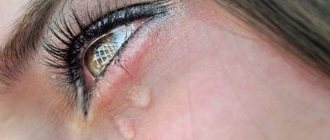Chocolate is an extremely popular, delicious and widespread type of confectionery product based on cocoa butter, which is a product of processing cocoa beans. This product is used both independently and as part of a huge number of dishes (mainly dessert), in particular cakes, puddings, mousses, cookies and pastries.
Can you get poisoned by chocolate? What are the symptoms of this pathology? What first aid should be given to the victim and quickly restore the body? You will read about this and much more in our article.
How does intoxication occur?
The very first cause of intoxication is the use of a low-quality product. Many manufacturers sin by adding trans fats to sweets. These are cheap technical substitutes for natural products made from palm oil. And although these products are much cheaper, they are dangerous due to their composition.
Finally, low-quality chocolates contain huge amounts of sugar. Its absorption requires a significant amount of insulin, which the beta cells of the pancreas may not have time to produce in sufficient quantities. If a person has impaired glucose tolerance, he may experience hyperglycemia.
Sometimes a person experiences functional hypoglycemia (due to the fact that in response to an increased amount of sugar entering the body, a huge amount of insulin is produced, which subsequently reduces blood glucose levels).
To be poisoned by theobromine, you need to eat about half a kilogram of chocolate (remember that for those with a sweet tooth this “task” is by no means difficult). Some people have an increased sensitivity to such a substance, and symptoms of poisoning appear when consuming much smaller quantities of the tasty sweetness.
Parents need to remember that chocolate can cause allergies. A very small amount of product is enough for this.
What is chocolate made from?
Chocolate began to be produced by ancient tribes that lived in what is now Mexico. In their rendition, it tasted bitter and pungent. It was brought to Europe by sailors. Although not all Europeans could appreciate this specific overseas delicacy. The chocolate that is eaten in our time differs in composition and preparation methods from the original. After all, the Aztecs valued it for the tart taste that cocoa beans have. Now this main component is processed to get rid of bitterness and astringency.
Today the world knows a large number of products made from chocolate. The delicacy itself is usually divided into the following types:
- black – it contains at least 55% cocoa beans,
- milk - powdered milk is added to its composition,
- white - instead of cocoa powder, it contains cocoa butter.
After the cocoa beans are processed, cocoa powder is obtained. To one degree or another, cocoa butter and powdered sugar are added to it. These are the main components of chocolate. In addition to them, the product may contain additives for a pleasant aroma or taste. It is worth familiarizing yourself in more detail with what is included in the basis of the delicacy. So, the composition of cocoa beans includes the following components:
- fats (about half of all components),
- caffeine,
- nitrogenous substances,
- cellulose,
- proteins,
- water,
- starch,
- tanning or coloring substances,
- ash,
- theobromine,
- saccharides,
- pentosans,
- organic acids,
- minerals and salts.
The ingredients for cocoa butter are the following:
- caffeine,
- theobromine,
- triglycerides of saturated fatty acids,
- antioxidants,
- aromatic and tannin substances.
The main signs of poisoning
When poisoned by this sweetness, a person experiences the following symptoms:
- severe nausea leading to vomiting;
- dizziness;
- cutting pain in the abdominal cavity;
- temperature rise to subfebrile levels;
- lethargy and lethargy are observed;
- diarrhea appears (there are no mucus impurities in it);
- heart rate increases;
- a person has an aversion to sweets;
- due to theobromine and caffeine, the nervous system is in an overexcited state.
When poisoned by expired chocolate, symptoms of food poisoning are observed. Signs of poisoning usually appear several hours after consuming a low-quality product. The symptoms in this case are as follows:
- Abnormal stool – constipation or diarrhea.
- Discomfort in the epigastric region.
- Infectious intestinal lesions.
- Severe pain in the head area.
- Activation of harmful fungi, which causes skin pathologies and candidiasis to develop.
- Abdominal pain.
- Thirst.
- Feeling overwhelmed.
- Vomit.
- Decreased appetite.
How to choose and what to replace sweets with
It's hard to imagine life without sweets. In order to eat properly, you should choose healthy sweets.
- Replace white sugar with fructose. It is 30% less caloric and does not cause dental problems;
- Consume honey;
- Dried fruits will replace sweets. Unlike the latter, dried fruits are low-calorie and have beneficial properties;
- You need to buy transparent marmalade. It does not contain any additional dyes that could have a detrimental effect;
- Learn to cook. In addition to the fact that it is healthier than store-bought analogues, you can add fruits, berries, and jam. This way you will get different tastes.
Tasty and healthy chocolate quite often becomes the cause of food intoxication. The composition of the allergenic product is dominated by cocoa butter, caffeine and theobromine.
Chocolate poisoning subsequently causes acute toxicosis in the human body. Severe pathological conditions can provoke dehydration and lead to tragic consequences.
First aid for intoxication
The stages of first aid for a poisoned person are as follows.
- You need to do a gastric lavage. This is done in order to remove product residues from the gastrointestinal tract. This is especially true for overdue poisoning. The patient should drink several glasses of water at room temperature, to which a little soda or potassium permanganate has been added.
- After this procedure, you need to drink a sorbent (activated carbon is possible).
- If your temperature is elevated, you can apply a cold compress to your forehead.
- It is advisable to do an enema: to completely cleanse the body, the procedure must be repeated several times after three hours.
To prevent dehydration and reduce the severity of symptoms of poisoning, it is necessary for the victim to drink more fluids. To do this, he needs to be given mineral water (preferably without gas). The use of Regidron and similar products is indicated. Drugs with absorbent properties will help prevent the spread of toxins throughout the body.
Timely treatment is the key to successful recovery. If there is no improvement after immediate help, you should consult a doctor.
Video: chocolate and candies - expiration dates.
Eat? Or not?
Having accidentally discovered a stash, many people think about whether it is possible to eat expired chocolate. If we are talking about a characteristic plaque, it is possible. Good news: you can eat the bar after the X-day, but only for 6 months. Not long ago, chocolate was included in the list of products that are safe to eat if they are expired.
Milk or dark chocolate can be eaten even if the expiration date has passed, but only if the “expiration date” does not exceed six months. Is it possible to get poisoned by expired chocolate? Of course you can. Especially if it contains fillers: all kinds of sweets, nuts, candied fruits and raisins. It is best to immediately throw such a product in the trash.
How to prevent the disease?
To avoid chocolate poisoning, preventive measures should be taken. You need to take your choice of sweets seriously. Here's what you need to pay attention to to prevent intoxication from sweets containing cocoa products.
- Chocolate consumption should be limited. There is no need to eat a whole bar at a time - just a few pieces are enough.
- You should never give children too much chocolate. He may develop a so-called taste addiction, and in the future it will be difficult to wean the child from consuming large quantities of chocolate.
- You should always check the expiration date of the product. This will help protect against food poisoning.
- Before purchasing, you need to check the sugar content of the sweet, the oils used, etc. Allergies may occur to some components, so people with hypersensitivity to chocolate need to be especially careful.
- You should take into account the fact that palm oil-based chocolate will not melt in your hand. It has a specific taste: for some people it will be unpleasant.
- If there are any contraindications to eating chocolate, then you should avoid it altogether.
Incorrect storage or expired?
Dark chocolate outlives its official shelf life by 4-6 months. But it’s better to throw away filled chocolates or candies without regret if they’re already 2-3 months out of date. Expired chocolates can provoke both poisoning by fat breakdown products and infection with bacteria, so the question of whether they can be eaten should not even arise.
If in doubt, pay attention to what the sweetness looks and smells like, and exactly how expired the candy is. If the storage conditions were in accordance with the standards, and the expiration date expired recently, then most likely the product is still safe. And if the packaging is damaged or there are other signs of improper storage, then such sweets can cause more harm than being out of date.
Why does poisoning occur?
You can get poisoned for the following reasons:
- if the chocolate is old, expired, contaminated with bacteria (a large amount of sugar is a suitable environment for many pathogens);
- when low-quality raw materials were used for production (instead of cocoa butter, trans fats based on cheap palm oil, which begin to damage cells when they enter the body);
- if an overdose of chocolate has occurred (the substance theobromine contained in chocolate is beneficial in small quantities, but in large doses leads to intoxication).
The lethal dose of chocolate for humans is quite high. The maximum amount of sugar that the body cannot cope with is 800–900 g, eaten at once, which is equal to approximately one and a half kilograms of chocolate products. Therefore, a lethal dose of chocolate is not always feasible even for the most notorious sweet tooth. However, if a lot of this sweetness has been eaten, chocolate poisoning in a person as a result of an overdose will not be long in coming.
Poisoning from chocolate products is most dangerous for children, the elderly, allergy sufferers and diabetics, as well as those with liver diseases.
Storage conditions for confectionery products
Stocks of chocolate dessert must be stored correctly. Candies, bars and bars are not placed in the refrigerator. The temperature range at which chocolate retains its consumer properties is from 15 to 20 degrees. Confectionery products cannot tolerate high humidity; the maximum value should not exceed 70%. Open packaging is stored for no longer than a month, regardless of the date of manufacture.
We recommend reading: Allergy to condoms in women and men: does it happen and how does it manifest itself?
Symptoms of poisoning
In case of poisoning with expired chocolate (both normal and low-quality), characteristic symptoms similar to signs of food intoxication will appear within 2-3 hours:
- discomfort in the epigastrium (upper abdomen);
- diarrhea (without blood or mucus) or constipation;
- nausea and vomiting;
- thirst;
- abdominal pain that worsens before and during bowel movements;
- temperature increase;
- headache;
- weakness, weakness.
In more severe cases, other symptoms appear:
- rapid pulse;
- increased blood pressure;
- nervous overexcitation;
- acne ripening;
- manifestation of fungal diseases, thrush;
- deterioration of appetite or its complete absence;
- heart problems (up to an attack or even a heart attack).
As soon as the first symptoms of poisoning appear, the victim should immediately receive first aid.
Chocolate "poison"
Chocolate – Many people can't imagine their day without eating a few cubes of the sweet brown bars. Chocolate intoxication occurs when you overeat it. This often occurs in older people with blood and heart diseases.
Why does chocolate intoxication occur? This is due to the high content of caffeine and a special substance – theobromine. Theobromine, if a person often consumes a lot of chocolate, begins to accumulate in the tissues, causing slow intoxication of the body, leading to very serious consequences.
For poisoning to develop, you must eat at least 500 g of sweets. Although this phenomenon often occurs from a smaller amount of chocolate, if a person has an allergic reaction to this product.
With age, most people begin to develop sensitivity to this product; in such cases, even a small amount of goodies can lead to serious consequences.
Symptoms of intoxication include the following:
- diarrhea;
- nausea and vomiting;
- lethargy;
- rapid increase in pressure;
- cardiopalmus.
In people aged 60 years and older, excessive consumption of chocolate can lead to complications such as hypertensive crisis, disruption of the gastrointestinal tract, and heart attack. In young children, chocolate often provokes an allergic reaction.
.
How to help someone who has been poisoned
Despite the fact that the lethal dose of chocolate is too high, and a person is unlikely to face death, at the first signs of poor health, assistance is simply necessary.
To do this you just need to do a few steps:
- Rinse the stomach. For this, slightly sour and salted water, as well as a weak solution of potassium permanganate in an amount of 1.5–3 liters, are suitable. When the water is drunk, the victim should be induced to vomit. This rinsing is done to remove toxins that have already entered the stomach. This will prevent their further spread into the intestines and absorption into the blood.
- Enema. It needs to be made with clean water at room temperature and without adding herbs and drugs. This is important in cases where there is no vomiting or it cannot be induced artificially (for example, in young children it is forbidden to provoke the eruption of vomit to avoid choking). An enema is performed to cleanse the intestines of toxins that have managed to enter it. The procedure should be repeated several times at intervals of 3 hours until the waste water is clear.
- Sorbents. There is activated carbon in almost every home, and it is good for poisoning. In addition to coal, you can offer the poisoned person Smecta, Enterosgel or Polysorb.
- Drink. Chocolate poisoning is accompanied by thirst, so it is imperative to give the victim a drink to prevent dehydration from developing. There is no need to insist that a poisoned person drinks a lot at once: this will cause another vomiting. It is enough to take a few sips at short intervals. In case of poisoning in a child, give the baby a teaspoon every 5 minutes.
- Decrease in temperature. To do this, you don’t need to immediately rush to the first aid kit and look for an antipyretic. The stomach has already suffered, and excessive load in the form of drugs can only harm it. To relieve fever, you can try traditional methods (wiping with cool water, a weak solution of water and vinegar, or cold compresses on the forehead).
Therapeutic measures
In the absence of positive dynamics after first aid, in the presence of symptoms such as vomiting and diarrhea lasting more than 2 days, high body temperature, rapid deterioration of condition, fainting, mental disorders and neurological disorders, the presence of blood streaks in the stool, it is necessary to deliver the person to a medical facility.
The treatment method is selected individually, medications are taken only as prescribed by a doctor, and self-administration of any medications is strictly prohibited.
To make a diagnosis, a blood test is performed, the contents of vomit and feces are examined, and an additional ultrasound examination of the digestive system, kidneys and liver may be necessary. These techniques are performed when complications are suspected. The first measure in the treatment of poisoning is gastric lavage using a special thick probe.
Depending on the severity and nature of the symptoms, the patient is given symptomatic treatment. In the case of a late visit to the hospital, when the poisoned person had prolonged, profuse vomiting and diarrhea, with a diagnosis of dehydration, a glucose drip is placed and general supportive therapy is carried out.
Compliance with a therapeutic diet is mandatory, physical activity is limited. The length of stay in hospital, depending on the severity of the clinical case, is from 2 to 10 days.
How is poisoning treated?
It is rare to call a doctor in case of chocolate poisoning. Usually the patient recovers in 2-3 days if first aid was provided correctly and in a timely manner.
But you need to call doctors if:
- small children, elderly people, pregnant women, allergy sufferers or diabetics were poisoned;
- signs of poisoning have not disappeared for three days;
- the increased temperature cannot be brought down;
- severe weakness, dizziness, convulsions appeared;
- noticeable pain in the heart area;
- the patient lost consciousness.
In such cases, medical care will consist of normalizing the water-salt balance, prescribing antidiarrheal drugs (for intractable diarrhea), antibiotics (for bacterial poisoning) and vitamin therapy.
Video: watch about chocolate without cheating
Read further:
Palm oil: harm and benefits for human health
Eutirox overdose - symptoms and consequences, what to do for pregnant women
Which mineral water to choose in case of poisoning ✅ with food or alcohol
Is it harmful to consume dairy products?
Symptoms of fungal poisoning
Article rating:
Share with friends:
You may also be interested in:
Melon poisoning - symptoms and treatment
Fatty food poisoning - what to do, symptoms and treatment methods
What to do in case of water poisoning (sea, hellebore) for children and adults
Bitter almond poisoning: lethal dose
Consequences of poisoning
The result of any poisoning is irritation and inflammation of the intestinal walls, which certainly leads to a deterioration in the absorption of nutrients. The water-electrolyte balance is disrupted, and severe dehydration can occur (which occurs especially quickly in children).
A lack of fluid in the body already has its own negative consequences, affecting even the functioning of the brain, not to mention the development of problems with the urinary system.
After poisoning, in order to calm the stomach and intestines, the victim is advised to follow a gentle diet based on light and healthy foods:
- not too rich chicken broth (can be done with a piece of toasted bread);
- unsweetened rice porridge (good for strengthening stool);
- mashed potatoes without adding oil;
- steamed meatballs or cutlets from lean minced meat;
- and, of course, drink (mineral water, sweetened tea, jelly, etc.).
Such a light diet will allow the digestive organs to quickly rehabilitate and begin full-fledged work. A poisoned person will recover faster.
Chocolate is a confectionery product made from cocoa butter and powder, sugar, milk powder and a number of additives. This is a tasty and nutritious product, loved not only by children, but also by adults. It is high in calories, rich in minerals and carbohydrates, and contains biologically active substances (caffeine and theobromine), which determine its tonic effect.
Despite all its beneficial properties, chocolate is not without its drawbacks: it is a strong allergen and can cause poisoning.
Contraindications for use
As a rule, all cases of intoxication that occur as a result of taking cocoa products are associated with a significant decrease in the quality of the dessert, but this does not mean at all that chocolate candies that are high-quality from all points of view cannot provoke such ailments. This was felt especially well by those patients who tested it on themselves: what happens if you eat several bars, for example, in a day? However, sometimes even one small piece can cause significant harm to health. Especially for people who are hypersensitive to the ingredients of a sweet product. These include the following categories of patients:
- children and old people,
- people suffering from diathesis, diabetes mellitus, as well as diseases affecting the gastrointestinal tract and liver,
- people who have an individual intolerance to any of the ingredients of the product.
People of the first category can consume such desserts, but only in small quantities. The benefits and harms of chocolate are very relative for them, since the sugar, caffeine and theothrombin contained in the dessert are difficult for them to tolerate.
For patients from the second and third categories, eating such sweets is strictly contraindicated. Moreover, this even applies to desserts like sugar-free chocolate.
How does chocolate poisoning occur?
Chocolate poisoning is associated with eating low-quality or expired chocolate, contaminated with pathogenic microorganisms that can lead to food poisoning (toxicoinfection).
Microorganisms (clostridia, staphylococci, streptococci, salmonella, E. coli), entering the gastrointestinal tract, release toxic substances that cause inflammation of the mucous membrane of the stomach and intestines. This inflammation causes signs of gastritis, enteritis and colitis (gastroenteric syndrome). In addition, toxins are absorbed from the intestines and enter the bloodstream, leading to general intoxication.
What happens if you eat expired food?
If the confectionery product partially or completely consists of substitutes, you need to rely on the shelf life indicated on the label - after the expiration date it cannot be eaten
If you eat a bar without fillers, the shelf life of which expired several months ago, nothing special will happen. However, you should not turn this experience into a habit.
When chocolate is very expired, fat oxidation begins. There is a release of carcinogens that provoke the development of malignant tumors and diseases, from arthritis to cancer.
There may be moth larvae in the tiles. It will not cause, contrary to popular horror stories, any significant harm to health. Its waste products are not dangerous to humans. But the very fact that you have to eat a chocolate bar with such disgusting completely kills your appetite.
There is no need to experiment on your body. If chocolate is expired by no more than six months, it is advisable not to eat it, but to prepare, for example, icing for decorating cakes and pastries. If the expiration date expired more than six months ago, it is wiser not to risk it at all.
Not only small children, but also adults love sweets. Regularly, but in small quantities, sugar is simply necessary for the normal functioning of the body, especially to maintain brain activity at the desired level. But this does not mean that you can eat cakes and pastries in unlimited quantities.
Any sweet is a food product that can lead to very severe intoxication of the body.
Sweets poisoning is caused not only by excessive consumption of chocolate bars and cream rolls, but also by the consumption of low-quality products, ranging from expired ingredients to the addition of harmful additives by unscrupulous confectionery factories to their products.
What is so harmful in sweets that they cause severe food poisoning? There are several reasons for body intoxication. Modern candies, chocolate and cakes are not made according to GOST standards; the amount of sugar in them exceeds all reasonable limits.
One chocolate bar contains the daily requirement of glucose, and if several of these bars are eaten, the excess concentration of sugar can lead to complications in the body’s functioning and cause serious consequences.
Another reason is poor absorption of sugar. Entering the human body in high concentrations, sugar is very slowly absorbed into the mucous membranes of the gastrointestinal tract, as a result of which their functioning is disrupted, stagnation occurs in the rectum, feces, with constipation, begin to gradually poison the body from the inside.
Excess glucose also affects a person’s appearance, and it’s not just about gaining excess weight. From an excess of sugar in the intestines, pathogenic microflora begins to actively grow and multiply, leading to the appearance of a large number of pimples on the face and body; in women, such pathological changes in the body can cause the development of vaginal candidiasis.
Sugar poisoning with excessive consumption leads to disruption of the functioning of the circulatory system, the level of glucose in the blood begins to fall rapidly, which leads to the development of functional hypoglycemia.
Against the background of hypoglycemia, hypoxia (oxygen starvation) begins and growth hormone slows down.
With constant consumption of large amounts of sweets, prolonged hypoglycemia causes the development of diabetes mellitus.
There are often cases of feeling unwell from sweets due to the consumption of expired products, this especially often happens in the summer, when cakes with cream are bought from trays on the street and are not stored according to sanitary standards. Intoxication occurs when consuming sweets, which contain a large number of harmful chemicals - taste enhancers, dyes.
Symptoms of poisoning
When eating low-quality chocolate, symptoms of poisoning begin to appear after 1–3 hours. These include:
- feeling of discomfort in the epigastric area;
- nausea and vomiting;
- diarrhea;
- abdominal pain that usually gets worse before and during bowel movements;
- increased body temperature;
- general weakness;
- headache;
- feeling overwhelmed;
- increased thirst;
- decreased or lack of appetite.
Diagnosis of chocolate poisoning is carried out on the basis of characteristic signs that appear after a short time from the moment of eating a low-quality product. To identify a specific type of pathogen, a bacteriological examination of feces and vomit is carried out.
Clinical picture
- feeling of nausea and vomiting;
- attacks of dizziness;
- rapid deterioration of general condition;
- severe abdominal pain;
- increased body temperature;
- lethargy and apathy;
- diarrhea;
- cardiopalmus;
- the appearance of perspiration on the forehead;
- feverish condition;
- convulsive contraction of the upper and lower extremities;
- fainting (rare symptom);
- feeling of disgust at the sight of sweets, even to the point of vomiting.
How quickly symptoms begin to appear depends on what was the triggering factor:
| What was eaten | Causes | Clinical picture | Timing of manifestation |
| Chocolate products | Caffeine, theobromine | diarrhea; increase in body temperature | 1-3 hours |
| Cream | Poor handling of eggshells, storage in violation of sanitary standards | weakness and lethargy; | 0.5 – 4 hours |
| Poor quality ingredients, violation of product storage conditions | nausea and vomiting; | 0.5 – 4 hours | |
| Cotton candy | Excessive concentration of sugar, harmful dyes | vomit; | 2-3 hours |
| Cakes | Poor quality ingredients, poor processing of eggshells, violation of storage standards | Strong headache; | 0.5 – 4 hours |
| Marmalade | Harmful flavors, chemical components, dyes and flavor enhancers | nausea with vomiting; pain in the abdominal area; general weakness and lethargy | 1-2 hours |
| Bar | Oils, flavor enhancers, excessive sugar | nausea and vomiting; increased body temperature; |
First aid for chocolate poisoning
First aid is aimed at removing pathogenic microbes and toxic products of their vital activity from the body.
The victim should undergo gastric lavage using the “restaurant” method. To do this, you need to drink several glasses of salted water or a pale pink solution of potassium permanganate, and then, irritating the root of the tongue, induce vomiting. The procedure is repeated several times until particles of semi-digested food are no longer detectable in the vomit.
When washing the stomach, the bacteria and their toxins that entered it with chocolate are removed from the body, but the small intestine cannot be cleansed in this way. To neutralize toxins that have managed to penetrate it, you need to drink any drug with an absorbent effect (Smecta, Activated Carbon, Filtrum STI).
To prevent the development of dehydration and reduce the severity of intoxication syndrome, the patient should be given as much fluid as possible. To do this, it is best to use still mineral water or a solution of Peditral, Regidron. You should not drink a lot at once, as this will lead to increased nausea, even vomiting. You should drink often, but in small sips. Children are given liquid every 5-10 minutes, a teaspoon.
Therapeutic measures
Severe intoxication, which occurs when consuming low-quality products (poorly processed eggshells, which may contain dangerous salmonella bacteria, is especially dangerous), or due to violation of storage conditions, is not always possible to stop on your own.
If, after providing prehospital care, the clinical manifestations of intoxication do not stop, it is imperative to contact a medical institution. Therapy methods are selected individually and determined by the degree of toxic infection.
In case of severe intoxication, the stomach is washed out using a special wide probe. In especially advanced cases, the patient requires long-term hospitalization in a day hospital with a course of IV drips.
If poisoning is caused by consumption of a spoiled product, especially cream, antibacterial therapy is carried out to relieve symptoms and prevent dangerous consequences.
When is medical attention required?
In most cases, chocolate poisoning does not require medical intervention; with proper first aid, all symptoms disappear within 2-3 days. However, in some situations you should consult a doctor immediately:
- poisoning in young children, pregnant women or the elderly;
- intoxication is accompanied by high temperature, which cannot be normalized by taking antipyretics (Paracetamol, Aspirin);
- symptoms of poisoning persist for more than 72 hours;
- the appearance of severe weakness, dizziness, convulsions;
- loss of consciousness.
Medical care for chocolate poisoning usually includes normalizing the water-salt balance, prescribing antidiarrheal drugs, antibiotics, and vitamins.
Prevention
To avoid the ailment in question, you should learn and put into practice a few simple rules:
- absolute refusal to eat sweets if it turns out that they are expired;
- a complete ban on eating food that contains mold or has an uncharacteristic structure, taste or smell;
- maintaining food storage temperature;
- purchasing sweets produced by trustworthy companies;
- refusal to eat loose dessert.
If you, for example, eat a product sold by weight, you will be taking a big risk, because it is impossible to determine whether such a sweet is expired.
Any poisoning, including chocolate, requires medical intervention, but most patients prefer to provide first aid on their own. Indeed, in many cases, after correctly carrying out the above measures, after 2-3 days all symptoms disappear without a trace. But there are a number of situations when seeing a doctor can be a matter of life and death:
Possible consequences
During the recovery period after poisoning, there may be a violation of the absorption of nutrients from the small intestine, which is caused by an inflammatory process in its walls. To treat this complication, it is necessary to adhere to a diet. Patients are allowed:
- weak chicken broth with crackers;
- mashed potatoes with vegetable broth and without adding oil;
- unsweetened rice porridge;
- steamed meatballs.
Properly organized nutrition reduces the load on the organs of the digestive tract and thereby speeds up recovery.
The most dangerous complication of chocolate poisoning, which usually occurs in young children, is dehydration with loss of microelements, that is, the development of water-electrolyte imbalances.
Diet
After intoxication, especially in a complicated form, disruption of the small intestine is often observed.
We recommend reading: De-Nol: course of treatment, doctor's prescription, features of administration, dosage, composition, indications and contraindications
To restore it, the patient will have to adhere to a certain diet, which includes the following dishes:
- steamed meatballs,
- weak chicken broth with the addition of croutons,
- unsweetened rice porridge,
- mashed potatoes boiled with vegetables and not containing butter.
This type of nutrition is the most gentle, as it reduces the load on the gastrointestinal tract, and this, in turn, promotes a speedy recovery.
What is that white coating on chocolate?
White spots on chocolate do not mean that you are about to eat an expired chocolate bar, but that the sweets were stored in inappropriate conditions. Chocolate prefers low humidity, darkness and temperatures between 15-20 degrees, no more. If the room where it was lying became noticeably hotter, then the cocoa butter could melt and come to the surface, and then dry out and become an unsightly white film-patina. Plaque affects taste and appearance more. By the way, it indicates that these products contain real cocoa butter - cheap trans fats do not give such an effect.
But plaque can make you wary and carefully check whether you have an expired product in your hands or whether the packaging has previously been torn, giving way to bacteria and moths. If the packaging shows signs of damage, and the expiration date has expired or is running out, it is better to discard the chocolate - it can be dangerous. Or at least not use it in its pure form - a lot of tasty and safe things can be made from melted chocolate.
How dangerous is white residue on chocolate products?
Chocolate with a white coating becomes much less tasty than when stored under the right conditions. But if it is not expired, then it does not pose any particular danger to health. And if you want to eat it and eat it, then there are unlikely to be consequences. Although it is highly advisable to preserve the quality of the product, store it correctly.
All the pros and cons
The main advantage of a chocolate bar with an expiring date is its favorable price. However, you should not buy dessert in reserve, and it is better to consume purchased sweets right away. It’s not a shame to use expired chocolate for culinary experiments, trying out new recipes. This can also be considered a positive thing.
The danger of consuming expired chocolate for the human body is not so great as to warrant a categorical ban. But you cannot expect that a delicacy will bring the same pleasure as a fresh product. An expired product loses its organoleptic properties.
You might also be interested in the article: 8 Natural Ways to Strengthen Your Immunity.
Dessert that has expired can cause food poisoning. And while with other expired products everything is more or less clear, it is quite difficult to determine whether the chocolate is gone or whether it can still be used due to the lack of obvious signs.
Main causes of intoxication
The cause of poisoning from spoiled sweets or chocolate with additives (raisins, nuts and others) can be the bacteria that have developed in them - salmonella, E. coli - which cause severe intoxication of the body. And the filling, which has become unusable, hits a doublet along with the chocolate component.
In chocolate, including good dark chocolate, whose lifespan has expired, cocoa butter begins to irreversibly oxidize, releasing carcinogens. The effect may vary depending on your health, the quality of the chocolate and the dose.
Be careful, the consequences of eating expired chocolate can be very unpleasant. You can get away with an allergy attack, or you can “implant” the pancreas, causing an exacerbation of pancretitis.
How to use cocoa bean bars if the shelf life has expired
In order to eat chocolate that has greatly expired without the risk of poisoning, it must be subjected to heat treatment. A product made from cocoa beans can become the basis for baking. For example, you can treat yourself to a chocolate cupcake, pie or gingerbread with icing.
A hot, invigorating drink will warm you up and restore your strength after a winter walk. It's not at all difficult to prepare. Just break the tiles, pour in half a glass of milk, add a pinch of cinnamon and a head of cloves, then bring to a boil.
You might also be interested in the article: Beer. Interesting Facts











